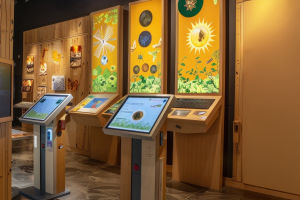When people think of illustrators, they often imagine someone with a sketchpad by a sunny window, drawing for fun. And while passion is where it all begins, turning illustration into a profession isn't as dreamy—or as simple—as it seems.
I used to draw just to relax. Now, it pays my rent. But the leap from hobbyist to professional illustrator came with unexpected lessons, daily challenges, and a whole new relationship with creativity.
Let me take you inside one typical workday and share what really shifts when your passion becomes your paycheck.
6:30 AM – The Warm-Up Ritual
Every morning starts the same: not with drawing, but stretching. After years of working hunched over a sketchbook, my back and wrists let me know this isn't a desk job you can breeze through. So I spend 15 minutes doing light exercises and wrist rotations before I even touch a pencil.
Then comes the creative warm-up:
1. Three-minute sketches of random objects around me.
2. Color experiments—I fill a page with different color pairings to loosen up.
3. One silly doodle, just for fun, no judgment allowed.
This isn't just for practice—it's mental prep. It sets the tone for the rest of the day.
8:00 AM – Client Work Begins
If you're imagining I just "draw what I want," I'm here to break the myth. Most of my day is dictated by contracts. Today, I'm juggling three projects:
1. A children's book spread for a publishing house.
2. Packaging illustrations for a tea brand.
3. A personal commission of someone's dog in a superhero outfit.
Each comes with a brief, deadlines, and rounds of feedback. The real skill isn't just drawing well—it's understanding what clients actually want, even if they struggle to say it clearly.
This is where soft skills come in. I spend just as much time on communication—writing emails, reviewing feedback, adjusting files—as I do drawing.
11:30 AM – Break (But Not Really)
I step away from my screen, but my mind keeps working. Often I'll take a walk with a podcast or just sit outside with a sketchbook. Many of my creative blocks loosen during this "off time."
Illustration isn't a faucet you can turn on. Stepping away sometimes unlocks the solution faster than forcing a design at your desk.
1:00 PM – Revisions and Admin
This is the part aspiring illustrators rarely think about. Being a professional means:
1. Sending invoices
2. Managing deadlines
3. Handling contracts
4. Formatting files for different uses
5. Prepping for print specs
And yes—doing revisions. That children's book I mentioned earlier? I've redrawn the main character's nose four times now. Feedback isn't failure; it's part of the job. The more open you are to it, the smoother your career will run.
3:30 PM – Personal Projects Matter
After client work, I carve out an hour for personal art. This isn't just self-care—it's how I grow as an artist and stay visible in the industry. Some of my biggest jobs came from pieces I posted online just because I loved them.
1. A fan art sketch I shared casually led to a gig with a game studio.
2. A passion project zine helped me land an editorial feature.
3. A daily drawing challenge got me hired for an online course.
Clients hire you not just for your skills, but your style. And that only develops when you draw beyond the brief.
5:00 PM – Boundaries Keep the Passion Alive
Here's something I learned the hard way: saying "yes" to every gig will burn you out fast.
Now I evaluate each opportunity with three questions:
• Will this project pay fairly?
• Does it align with the kind of work I want more of?
• Do I have enough time to do it without rushing?
Turning art into income shouldn't mean squeezing out the joy. I guard my evenings carefully and only take extra work if it truly excites me.
The Mindset Shift: Hobby vs. Career
When drawing was just a hobby, I drew when I felt like it. Now, I draw even when I don't. That's not a complaint—it's a discipline. Professional illustrators don't wait for inspiration. They work through the blocks, edit their ideas, and trust the process.
That doesn't mean the joy is gone. It's just deeper. There's a special pride in looking at a magazine, package, or storybook and thinking, I made that.
What I Wish I Knew Before I Started
1. You'll spend at least 30% of your time not drawing. Emails, admin, file prep—it's all part of the job.
2. You don't need to be the best—you need to be consistent. Clients value reliability over genius.
3. Style takes time. The only way to find it is to keep creating.
4. Community matters. Joining forums, critique groups, or online challenges keeps you motivated and connected.
5. You'll still draw "bad" things. Even professionals make work they hate. Keep going.
Would I Do It Again?
Absolutely. Turning illustration into a job didn't ruin the magic—it made it richer. But it's not just about talent. It's about discipline, boundaries, and knowing when to treat yourself like an artist—and when to treat yourself like a business.
If you're doodling in the margins of your notebook right now and wondering if this could be more… maybe it can. Just be ready: it's not only about drawing—it's about showing up, again and again, for your creativity.
Curious what a day in your dream job would really feel like? Would you trade the freedom of a hobby for the structure of a profession? Let's talk.


